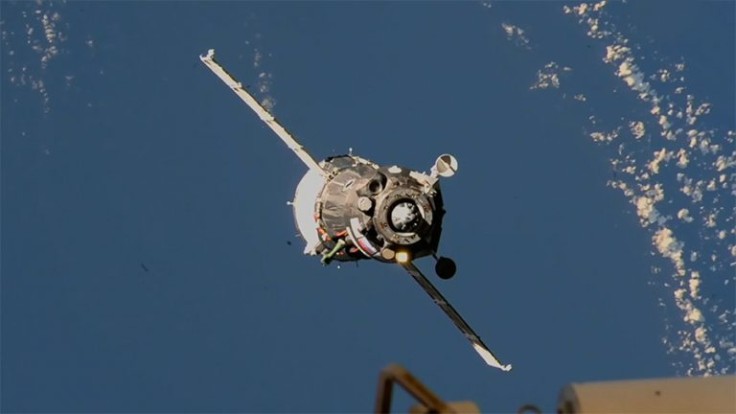Russia's Soyuz MS-22 spacecraft may be unable to bring its passengers back to Earth.
NASA and Roscosmos officials announced they are continuing their investigation regarding if the leaky Soyuz MS-22 spacecraft can survive re-entry and safely return to Earth.
NASA found the leak on Russia's MS-22 spacecraft in mid-December while it was docked on the International Space Station, preventing two cosmonauts from executing a spacewalk outside the facility.

NASA-Roscosmos Joint Soyuz Spacecraft Investigation Details
NASA and Roscosmos managers said in a Dec. 22 teleconference that they are investigating the cause behind the leak found on the latter's Soyuz MS-22 spacecraft, per Space News.
The hole in question is 0.8 millimeters across and is located on the spacecraft's coolant pipe.
According to Sergei Krikalev, executive director of human spaceflight programs at Roscosmos, they are doing thermal analysis to determine if they can use the spacecraft to bring its passengers back to Earth on a nominal reentry.
They are also considering if they should send a rescue vehicle to the ISS in the future to pick its passengers up from the station.
Should the investigation proves that the Soyuz MS-22 is incapable enough to survive re-entry and return to Earth in its current status, Russia will send a new one to bring the MS-22's passenger back to Earth.
To be specific, Russia will send the MS-22's successor, the MS-23 spacecraft, to meet up with the ISS and pick its passengers up to get them home on Earth.
You may remember that Russian cosmonauts Sergey Prokopyev and Dmitri Petelin, and NASA astronaut Frank Rubio boarded the ISS through the now-leaky Soyuz MS-22 spacecraft.
Meanwhile, the MS-22 may be returning to Earth without a crew sometime in the future depending on its condition.
Unfortunately, the MS-23 is scheduled to launch on a crew rotation mission in mid-March, but it could be pushed back by a few weeks into late February, per Ars Technica.
The distance between now and then means that the current options the astronauts have to get off the station now are the Soyuz MS-22 and SpaceX's Crew Dragon spacecraft.
Meanwhile, the situation in the ISS is returning to normal, with a spacewalk in progress for installing solar panel upgrades.
What Happens During Re-Entry?
Spacecraft re-entry is a mostly ugly business. According to How Stuff Works, a spacecraft returning to Earth will be affected by the planet's gravity, hitting and rubbing the Atmosphere's air particles as its gravity pulls it down, creating friction.
This friction creates drag (or air resistance), slowing the spacecraft's descent to the Earth's surface. However, the spacecraft will experience temperatures of about 3000 degrees Fahrenheit (1649 degrees Celsius) during the spacecraft's re-entry.
Soyuz crew members are protected with special insulating materials that keep the crew at safe temperatures, per the UK's National Space Centre.
During the descent, the friction causes ablative layers of the spacecraft to burn, forming a bubble of plasma around it and cutting communications off for around five minutes and 40 seconds with ground control stations.
Related Article : Russian Spacecraft Soyuz Docks To ISS Due To Leaky 0.8 Millimetre Hole









